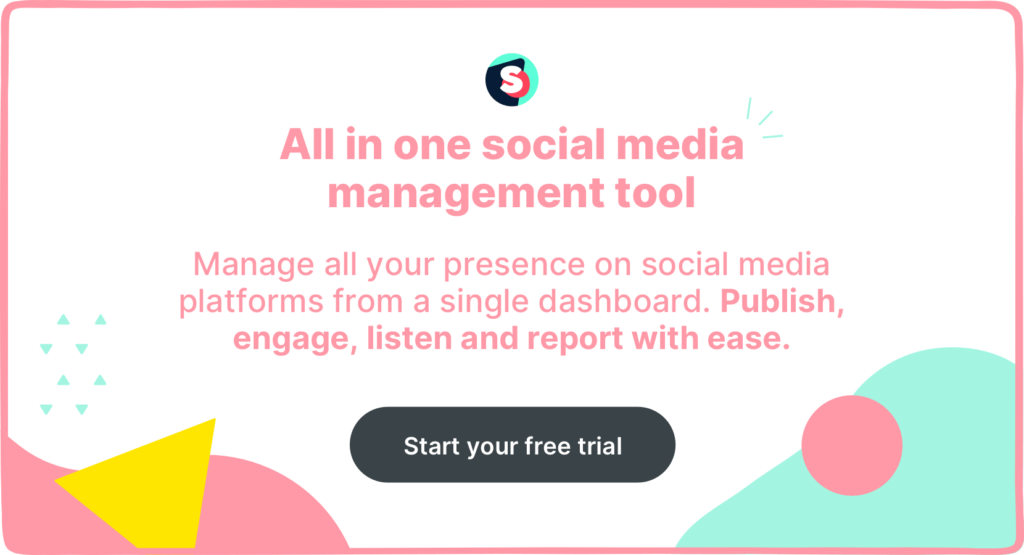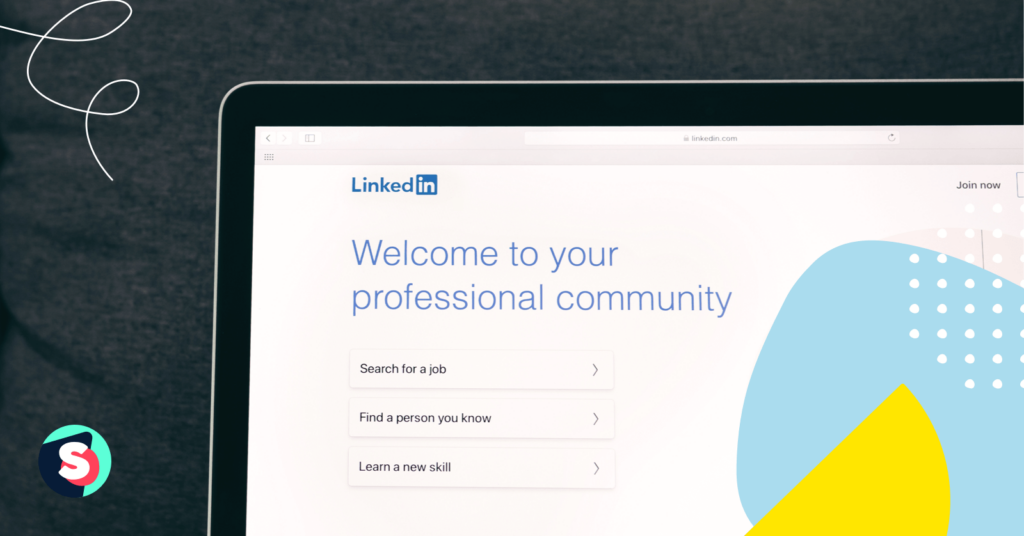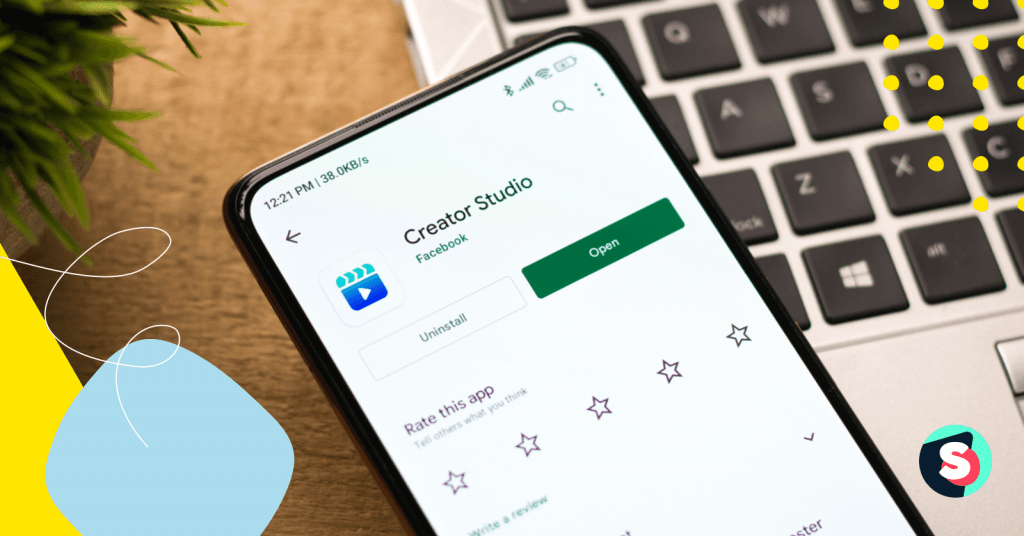If you’re the social media executive or community manager for a B2B brand, LinkedIn marketing is surely a channel you rely on to promote your brand and drive leads for your sales team.
The stats that underline the platform’s importance to B2B marketing are well known. For instance,
- 40% of B2B marketers claim LinkedIn is the most effective channel for driving high-quality leads.
- Also, over 65 million decision-makers are present on LinkedIn. So it’s definitely no surprise that…
- 93% of content marketers use the platform for organic social media marketing.
Those numbers sound good. But they don’t provide any hint on how to achieve success for your brand on LinkedIn.
That’s where this article comes in. If you continue reading, you’ll find 7 actionable LinkedIn marketing best practices that you can start implementing.
Unlike popular LinkedIn tips – like customizing your LinkedIn URL and using a professional photo – that doesn’t seem to have any effect on your social selling strategy, the tips in this article are provided by marketers who have experienced the lead generation power of LinkedIn.
These marketers are:
- Jessica LAM Hill Young: Principal Strategist @ The Brand Creatives
- Precious Oboidhe: Content Strategist for SaaS companies
- Kristina Knut: Social Media Manager @ Supermetrics
So, without wasting time, let’s dive into the best practices.
- 7 actionable LinkedIn tips that will grow your business
- Always start with a content strategy
- Build a community of your ideal persona
- Consistently contribute valuable content
- Work the DMs too
- Repurpose your content
- Don’t worry about virality
- Analyze your performance
- Bonus Tip: Personal profiles or company pages: What’s the best for your LinkedIn marketing strategy?
7 actionable LinkedIn tips that will grow your business
Always start with a content strategy
Start your LinkedIn campaign–and every other social media campaign–by listing your goals and creating a game plan to achieve them. When you focus on defining your LinkedIn content strategy before content production, you develop a foundation that allows you clarity of actions and accountability.
“I started managing the social media channels of Supermetrics 6 months ago…[And] the first thing I did was a thorough audit of all the social media channels the brand has,” Kristina shared.
A properly done content strategy uncovers information about your brand, audience, and competitors. In Kristina’s case, developing a strategy before creating any content helped her understand the following:
“… who is our target audience, which channels have the most engaged follower base, what type of content performed well, what type of content didn’t resonate with our audience.”
Below, you will find steps that will guide you in creating a winning social media content strategy.
- Set goals that align with your overall business objectives: It is hard to measure success if you don’t know what you’re aiming for. So set marketing goals for your LinkedIn campaign.
- Reacquaint yourself with your target audience: You know who your brand’s ICPs are. But it won’t hurt to open up their personas to find out if there are any market or consumer trends that could influence how they engage with your brand on the platform.
- Do a competitor analysis: If your competitors are already on LinkedIn, do a competitor analysis to learn from their tactics. You’ll find out how successful their approach has been.
- Do a social media audit: A social media audit of your LinkedIn content efforts to uncover insights on what worked, your most engaged ICPs, and what your next move should look like.
- Brainstorm compelling content: You can draw inspiration for LinkedIn content from your brand’s blog, case studies & testimonials, and even your competitors’ posts.
- Create a content calendar: A content calendar helps you manage your content creation and publishing schedule.
- Track your performance: A social media strategy isn’t a one-off thing. You have to regularly assess your progress and make adjustments to your game plan.
Remember, hope isn’t a strategy. You can increase your chances of success on LinkedIn by following a content strategy.
Build a community of your ideal persona
When building a community online, prioritize engagement quality over audience size. That was the view of Precious. As he concisely put it:
“More followers isn’t better if you’re building an army of people who have no interest in your product.”
Relationships on LinkedIn are richer and more valuable if you have them with engaged members of your target audience. This is true whether you manage a personal profile or company page.
If you’re in charge of a personal profile, resist the urge to send connection requests to everyone that LinkedIn recommends. There are easier and more profitable ways to cross the 500 connections threshold and look like a thought leader.
For company pages, build your community by creating highly valuable content and interacting with posts from profiles relevant to your niche. This increases your page’s visibility and boosts the chances of desired profiles following your page.
Above all, the key to building a successful LinkedIn community around your brand is consistency. Your LinkedIn success won’t happen overnight. You have to show up regularly to stack up your little wins.
“The number one factor to successfully build your is to be consistent: consistent in seeking out pairs and ICPs, engaging with them by leaving meaningful comments, and consistent in your own content creation,” says Jessica LAM Hill Young.
Consistently contribute valuable content
LinkedIn is a haven for thought leaders. With each scroll on your screen on the platform, you’ll find professional advice that promotes its author as an expert. That’s why 9 in 10 executives rate the platform as their number one source for professionally-related content.
This thirst for high-quality professional content serves as an opportunity for your brand to succeed as a content creator on LinkedIn. According to Kinsta, only about 1% of LinkedIn’s 260 million monthly users are creators. This doesn’t even account for the percentage of creators that only publish fluff.
“LinkedIn is a value-adding platform. People hang out [there] to learn, connect, and look for opportunities. To succeed on the platform, there are no hacks. You have to contribute, engage, and create value,” says Jessica.
But how often do you need to show up? The answer is it depends.
Jessica suggests you publish relevant posts five times weekly, and that could work. You can also decide to set a thrice weekly cadence and see fruitful results too.
The most important thing to worry about is the value you create and your consistency.
Work the DMs too
Is direct messaging part of your social media strategy? If it isn’t, you should consider it.
“Taking responsibility for your business is a potent but underrated way to crack the LinkedIn code,” says Precious. “I’ve had genuine conversations in the DMs that unlocked many doors. When the result isn’t a remarkable project, I gain friends who refer my services to their clients or tell me their point of contact so I can reach out for a collaboration. Either way, I win.”
It’s not just Precious that testifies to the power of leveraging DMs for business growth. According to this report, 1 in 2 marketers uses direct messaging as part of their social media marketing strategy.
If you don’t know how to build business relationships via DMs, there’s a 5-step method for turning a direct message into a sale, courtesy of Niyc Pidgeon–a business coach and psychologist. The steps are below.
- Qualify your audience by asking questions: LinkedIn DMs are hallowed spaces. Don’t barge into another user’s inbox without prior interaction. Instead, ask questions in your feed that allow people to qualify themselves. You can then reach out to those who are a right fit for your offering, as they are already invested in the conversation.
- Forget the outcome: Enter the conversation with a focus on building a relationship with the prospect first. Seek to understand the other person. This will set you up for greater success in the short- and long term.
- Open the DM conversation with a positive frame. It’s easier for your prospects to flow with the conversation when they’re focused on what’s good. So ask questions like “what amazing results are you providing your clients?” or “what’s exciting for you right now?”
- Offer an insight or quick win: Making sales is about understanding your prospects’ needs and making offers based on your ability to solve their problem. But before you suggest a product/service, offer the prospects a quick win or insight that solves a small problem for them.
- Make an invitation: Once you realize that the prospect is a right fit, switch to selling by making an invitation to either apply or buy. For a right-fit prospect, this wouldn’t look like selling. Instead, it would seem like you’re inviting the person to try out a solution that solves a problem they have.
Repurpose your content
Content repurposing keeps your content engine spinning and gets leads flowing in. By converting your pillar content (webinars or blog posts) into formats suited for the platforms your target audience visit (like carousel posts on LinkedIn), you increase your chances of catching the attention of new customers and pulling them into your marketing funnel.
Kristina Knut agrees:
“Content repurposing goes a long way – not only will it reinforce your brand image, it also ensures your brand will reach as many people as possible. Let’s say we had a webinar. Based on that, we will also write up a blog post, reformat it into a podcast, create small bite-sized videos, and shareable infographics for social media…”
Some of the formats for repurposing your content on LinkedIn are carousels, shareable graphics, short videos, LinkedIn live, and text-based posts.
Don’t worry about virality
Marketers are obsessed with virality. That is clear based on the types of metrics we prioritize– number of views and shares.
Virality isn’t a bad thing. But instead of making it your campaign objective, see virality as a consequence of doing your job well. Focus on creating content that strikes a chord with your target audience so that whether your content goes viral or not, you’ll be making an impression on your audience.
Jessica shares her experience with viral content.
“Unless you’re on LinkedIn for the dopamine hit, it’s not super important to go viral. I’ve had posts that went viral and didn’t close any business and posts with low engagement that brought in ideal clients.”
Some posts will get shared a couple of times. Others won’t. But strive to always make an impression on anyone who engages with your post.
Analyze your performance
Diving into your LinkedIn analytics is how you assess the results of your marketing efforts and tweak your strategy accordingly. But for plenty of marketers, that’s too much work–almost half of the marketing decisions aren’t influenced by marketing analytics.
“I think people often focus on tactics while all the answers are already available in our own performance data,” Kristina observed.
LinkedIn’s in-built analytics tool gives you access to your brand’s performance on LinkedIn over a specific period of time. It is a very good option if your brand only connects with its audience on LinkedIn
But that’s most likely not the case.
Like Supermetrics, your brand aims to build relationships with its audience on multiple social media platforms. To track your progress holistically, you need a tool that enables you to integrate real-time social media data with the rest of your data warehouse and automate your social media workflows.
In that case, a social media management solution like Sociality.io is valuable. With the platform’s robust analytics tool, you can track all your social media KPIs and deliver reports directly into your stakeholders’ inboxes. And using Sociality.io’s API, you can connect your social media data to your Business Intelligence software and enjoy a 360-degree view of your marketing data.
Bonus Tip: Personal profiles or company pages: What’s the best for your LinkedIn marketing strategy?
The short answer to that question is both. The two account types have important roles to play in the success of your overall LinkedIn strategy.
Precious, however, believes that personal profiles are more valuable.
“Personal profiles will always outshine company pages because people want to see the face behind the content.”
And that’s true. On social media platforms, people want to connect with other people. But this doesn’t mean you should ignore your brand’s company page though. To make it work for you, however, you must do as Kristina says and “insert your brand into conversations in ways that show a bit of personality.”
An Employee Advocacy program is one way to humanize your brand on LinkedIn.
Employee networks have 10x more connections than the company’s followers. So a single post from each employee in your advocacy program will reach more people and potentially generate more business than posts shared on the company’s page.
Your colleagues won’t always know what content to share, so it’s up to you to provide creative direction. You can then reinforce your brand by inserting your company’s page in the conversations started on the personal profiles.




